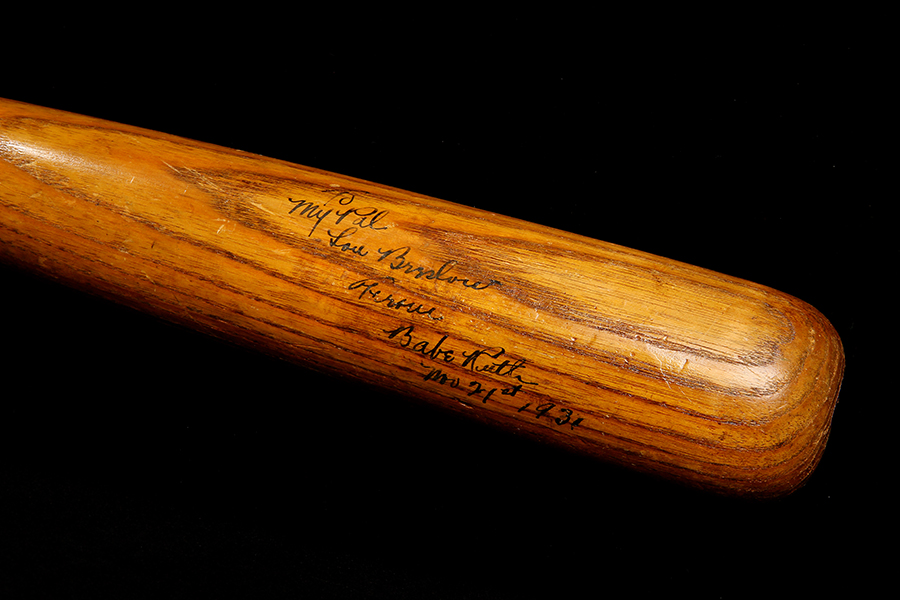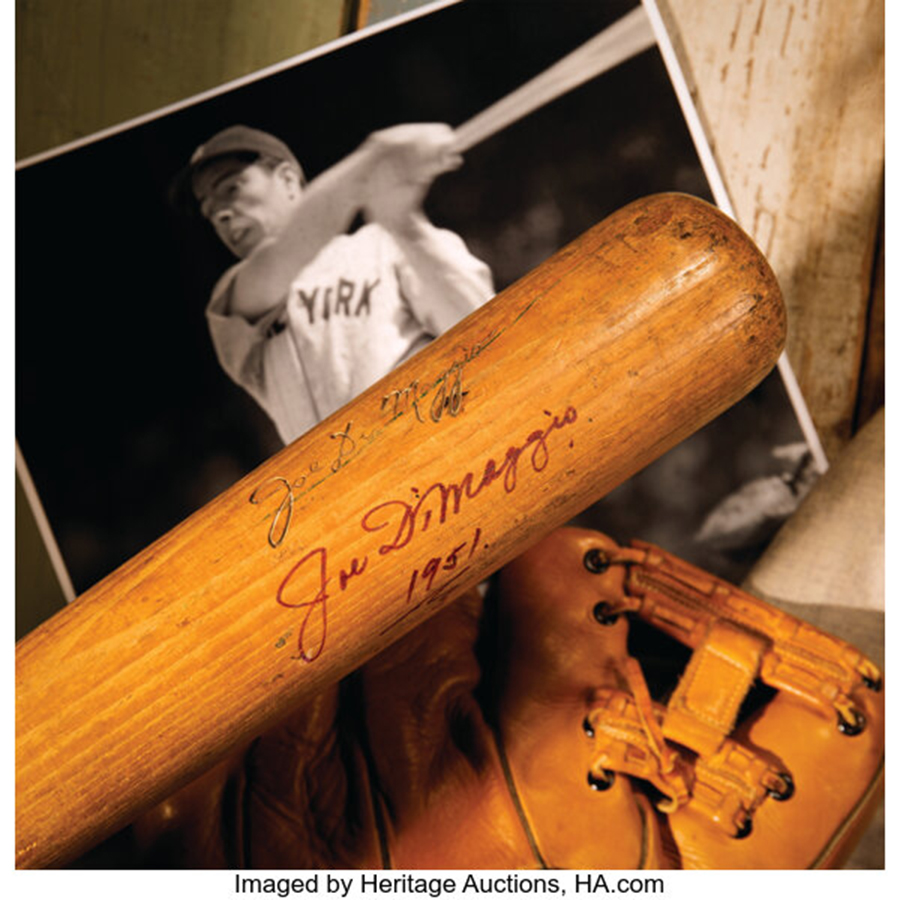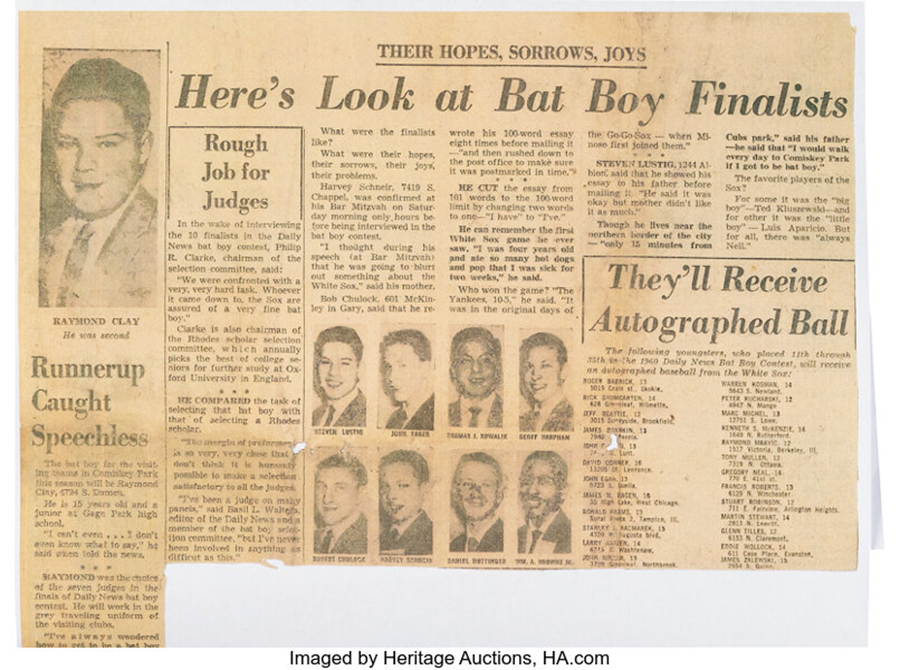BEFORE TAKING A SWING AT COLLECTING PRO MODEL GAMERS, FAMILIARIZE YOURSELF WITH THE KEY FEATURES THAT CAN AFFECT THEIR VALUE
By Joe Orlando
The baseball bat is a symbol of both artistry and power. It is an extension of the hitter and his craft, the weapon he wielded on the field of battle. In the hands of a mere mortal, it is just a piece of wood, but in the hands of those with exceptional skill, it becomes an enchanted sword sent down from Mount Olympus.
To collectors, that magic is tangible and felt once you hold history in your hands.
Hitting a round ball with a round bat, squarely, is still one of the toughest things to do in sports consistently. To illustrate the point, failing seven out of 10 times results in what many consider an excellent batting average of .300 in the current game. If an NFL quarterback completes 30% of his passes, he soon will be looking for a job. If an NBA player shoots 30% from the field, he might find himself on a blooper reel. An MLB hitter with the same level of success, however, might be on course for Cooperstown enshrinement someday.
The growing bat-collecting market has changed substantially over the past two decades as collectors have become more discerning and sophisticated. There is also more information about this collectible category available today than ever before. As a result, this tool of the trade has never been more popular in the hobby. To study the evolution of the bat is to study the evolution of America’s National Pastime itself. Collecting these wooden war clubs connects their owners to the idols of offense, from formidable sluggers to the masters of bat control.
For those interested in exploring game-used bat collecting, we present a hobby guide containing the key factors that can impact demand and, ultimately, value.
Enlarge
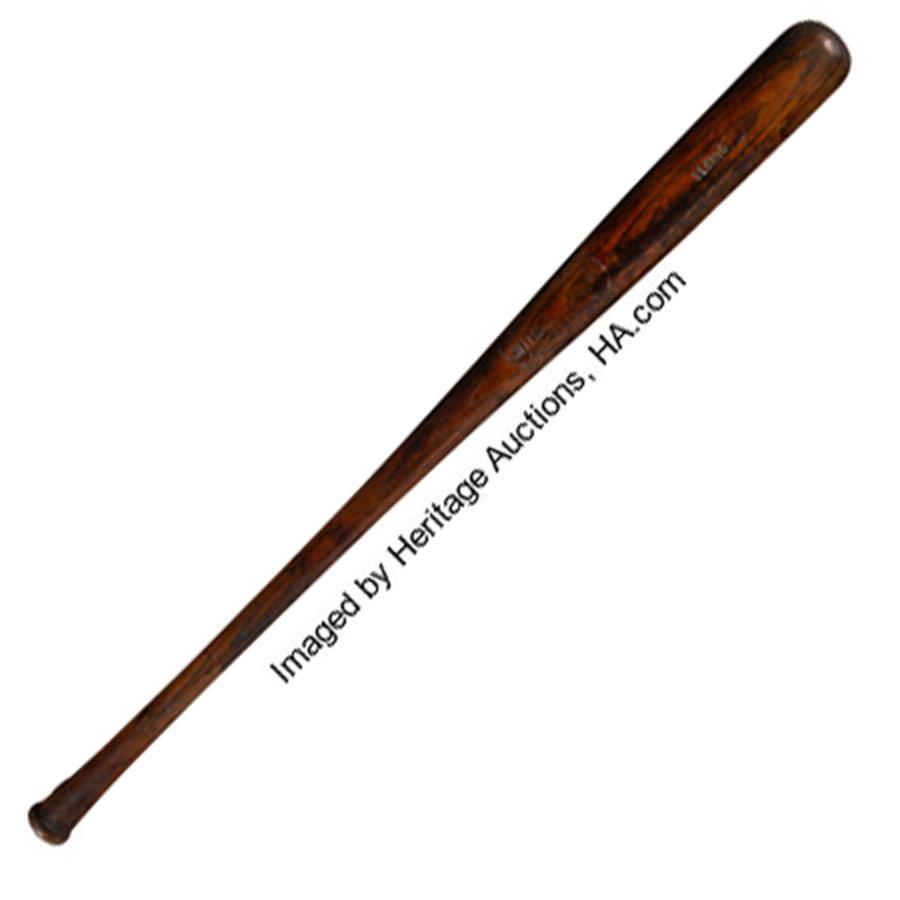
Value the Authentication/Grading Process, But Understand Its Limits
Like every other major segment of the sports collectibles industry, third-party authentication/grading acts as one of the pillars in the foundation of the game-used bat market. These services exist for a few core reasons: to ascertain the authenticity of the items, to assess their quality (where grading is available) and to provide assurance to collectors. Authentication/grading companies also provide the structure the market needs so buyers and sellers have a better understanding of the collectibles they trade in.
In the world of game-used bats, the grading process is completely different from the type applied in the sports card market. What constitutes “high grade” in this collectible category does not translate to trading cards, and vice versa. After a card is examined for authenticity, the final grade comes down to one thing and one thing only – condition.
While condition is relevant from a preservation standpoint and some aesthetic issues can negatively impact the grade if severe, experts evaluate bats with other attributes in mind since the right kind of wear is desired. Once a bat is determined to be an authentic professional model based on various features such as its labeling, wood quality and available Professional Bat Ordering Records (PBOR), attributes such as identifiable player characteristics and evidence of game use are at the heart of the grading process.
It is always advisable to require approval from a third-party service before you buy. That said, it is also crucial that collectors understand the valuation process is not over after a bat is officially certified. The grade is just the beginning.
As a result of the variables in play, bats are not “commodity-like” in the way that trading cards can be. Third-party certification is an important part of valuation, and perhaps the most vital one, but it is not the only germane factor. Collectors must consider the reputation of the service and the details found in the authenticator’s review, which can help ascertain value beyond the technical grade.
Furthermore, additional factors such as eye appeal (the visual quality of the piece), provenance (the connection to its origin) and more can lead to wildly different valuations of seemingly similar items.
Key takeaway: Third-party authentication and grading help set the foundation, but other attributes can impact value, sometimes significantly.
Enlarge
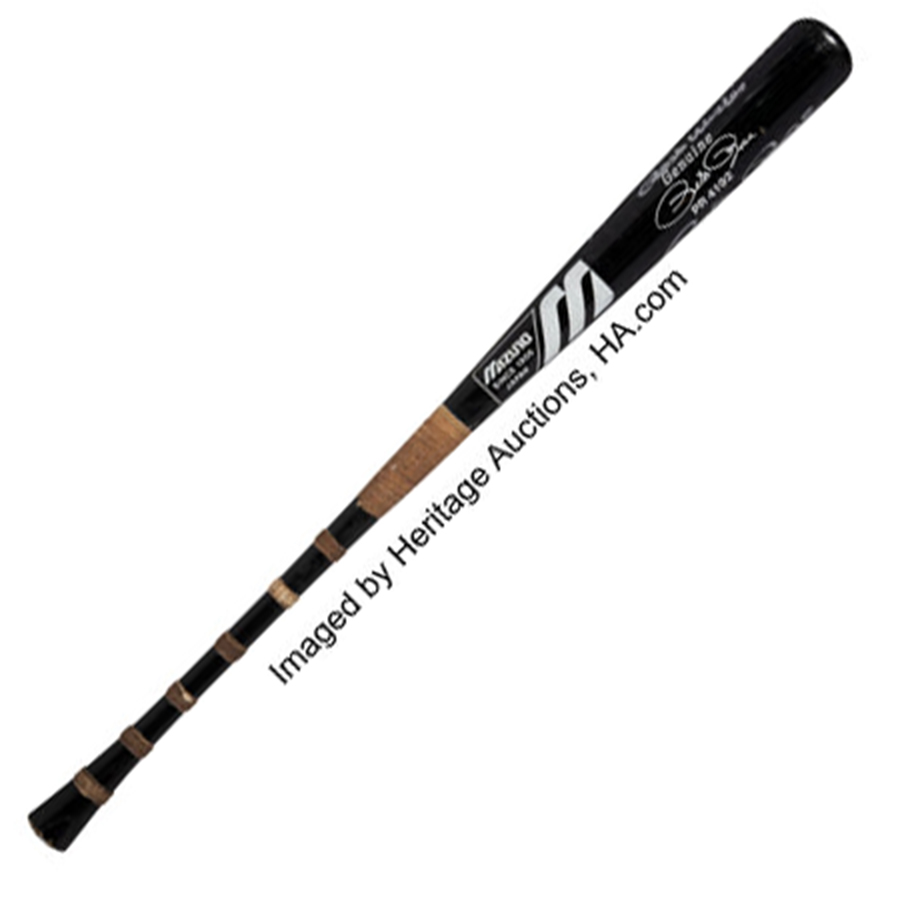
Do Not Underestimate Eye Appeal
In any genre of collectibles, the laws of attraction apply. Sometimes, it is hard to define or explain, but the way an item looks can draw you to it in an almost unconscious manner. It sounds simplistic on its face, but it is a tale as old as time. It does not matter if it is an autograph, a bat or a card. The same principle applies to items found outside the sports collectibles market as well, like watches, cars or pieces of art. The first impression something makes, either good or bad, has a lot to do with its appearance and the way it makes you feel.
With game-used bats, eye appeal is determined after a combined evaluation of its condition and its character takes place.
It has often been said that an ideal bat is one that looks like it was pulled right from the rack after seeing significant action. The preferred look is one where game action is evident yet its state of preservation is exceptional. Furthermore, the optimal bat was stored and cared for properly, while not suffering wear due to post-use handling or being exposed to the elements. The quintessential bat was frozen in time and bottled, from the moment it was passed on to its destination today.
We will cover the concept of player characteristics in greater depth later in this guide, but it is essential to touch on the subject here as well. Along with condition, the “character” of a bat is what makes the viewer stare a little bit longer or want to instinctively grab it. What experts, and collectors, must verify is that the attributes responsible for giving the item its character are consistent with the behavior of that player.
For example, if you are looking for a well-used George Brett bat from later in his career, extreme applications of pine tar are coveted. If that same amount of pine tar appears on a Mike Piazza bat, it might look cool, but it is not consistent with the former catcher’s style of handle preparation.
Remember, a bat’s rarity is extreme on occasion, so collectors must temper their expectations. That said, the bats that have “the look” to go with everything else tend to sell for a premium.
Key takeaway: The aesthetic qualities of a game-used bat can generate the kind of visceral reaction that adds value above and beyond its technical rating.
Enlarge

Learn How to Identify Use and Player Characteristics
While the evaluation of general use is made at the point of authentication and grading by the experts, it is prudent to learn how to spot those attributes on your own. There is a difference between signs of legitimate game use, such as deeply embedded stitch impressions or rack marks, and wear or damage from the way the bat was handled after it left the field of play, dugout or clubhouse. Once a bat is retired, improper storage or poor handling can be a problem.
The scars of game battle are sought after – not so with scars of post-use travel.
Then, there are player characteristics, which are quite different from signs of general use. In the game-used collecting category, this applies to professional model baseball bats more than any other piece of equipment. Bats are customized in a manner that exceeds any other tool of the trade. Players order bats to spec from the manufacturer and then further customize them by hand once received.
Enlarge
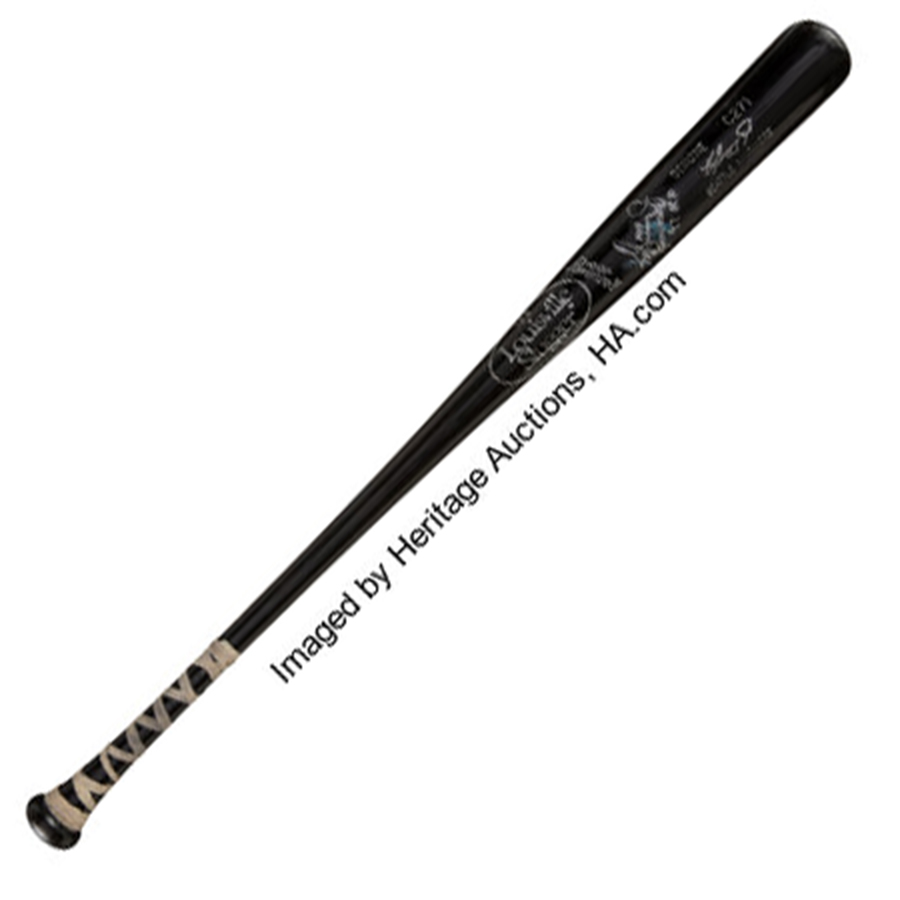
This can come in the form of gripping enhancements, like handle tape or pine tar, or the way a knob or barrel end is marked. These types of bat modifications are referred to as player characteristics. The presence of distinct and identifiable characteristics helps place the bat in the player’s hands, and these “fingerprints” often enhance eye appeal in a dramatic way.
What matters is that collectors familiarize themselves with the types of characteristics that each player is known for and how those modifications changed over the course of their careers. Studying images and video footage of game action is one way to do it, along with perusing other resources that provide valuable insight. Some hitters are extremely consistent about bat preparation, while others make dramatic changes to their approach at different stages.
Excellent examples of players who made radical changes to their bat preparation are Mickey Mantle and Willie Mays. During the first half of their careers, neither legend was an avid user of pine tar. By the early to mid-1960s, that changed, with Mays altering his approach a little later than Mantle. The two sluggers began applying a heavy layer of pine tar, covering different degrees of surface area, to many of their bats.
Mantle and Mays did not prepare every bat they used that way, but the presence of those applications acts as evidence. You can see the pattern of handle preparation evolve, and the change was significant. If these types of “fingerprints” are present, they help place the bats in the hands of those hitters.
Enlarge
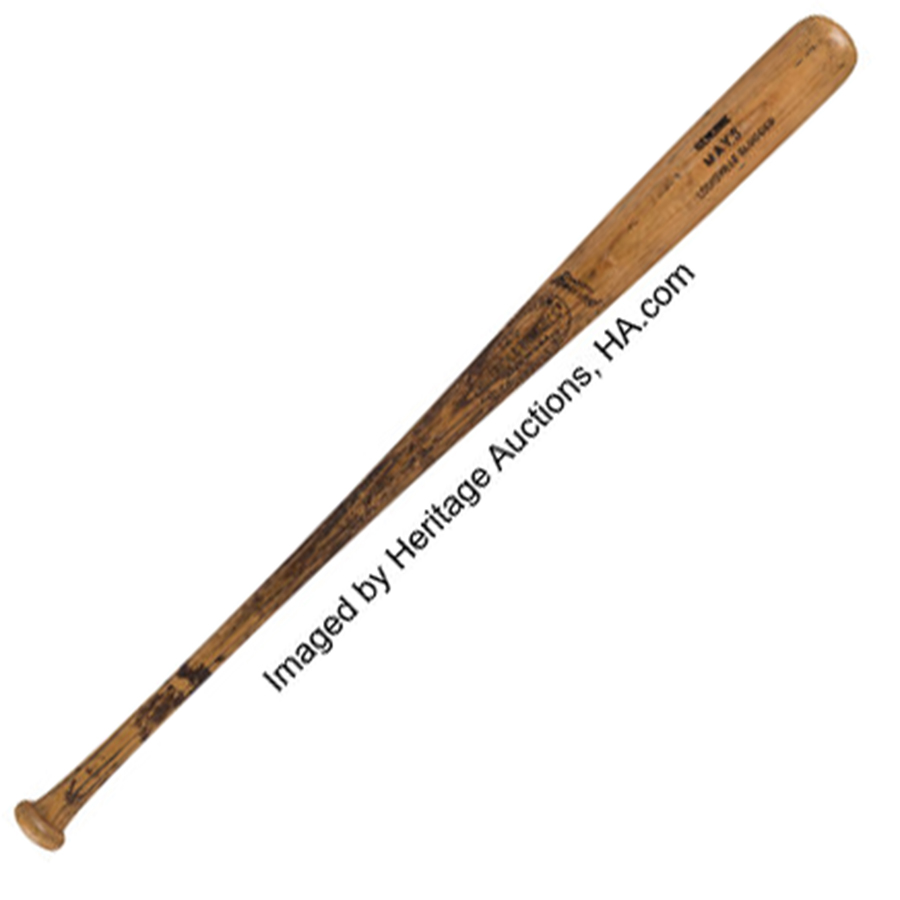
When a bat exhibits supreme player characteristics coupled with obvious use, the merit of the bat alone trumps all supporting elements around it. Credible provenance, which we will cover later in this guide, is not superior to or a replacement for stand-alone merit. It is additive, the story behind how or when the bat was acquired.
As simple as it sounds, once you become well versed in this area, all you need to do is look at the bat to know whether it is an exemplary gamer for that player. The bat’s quality is often revealed through the eye test. Don’t become distracted with elaborate stories of origin or tall tales about the bat’s conquests; just look at the bat in front of you. In some ways, the discernible traits of the bat should tell much of the story on their own.
Furthermore, the basic formula here is that recognizable characteristics = character, which often leads to eye appeal.
Key takeaway: The telltale signs of action and player customization add to the magic, and value, of each game-used bat.
Enlarge
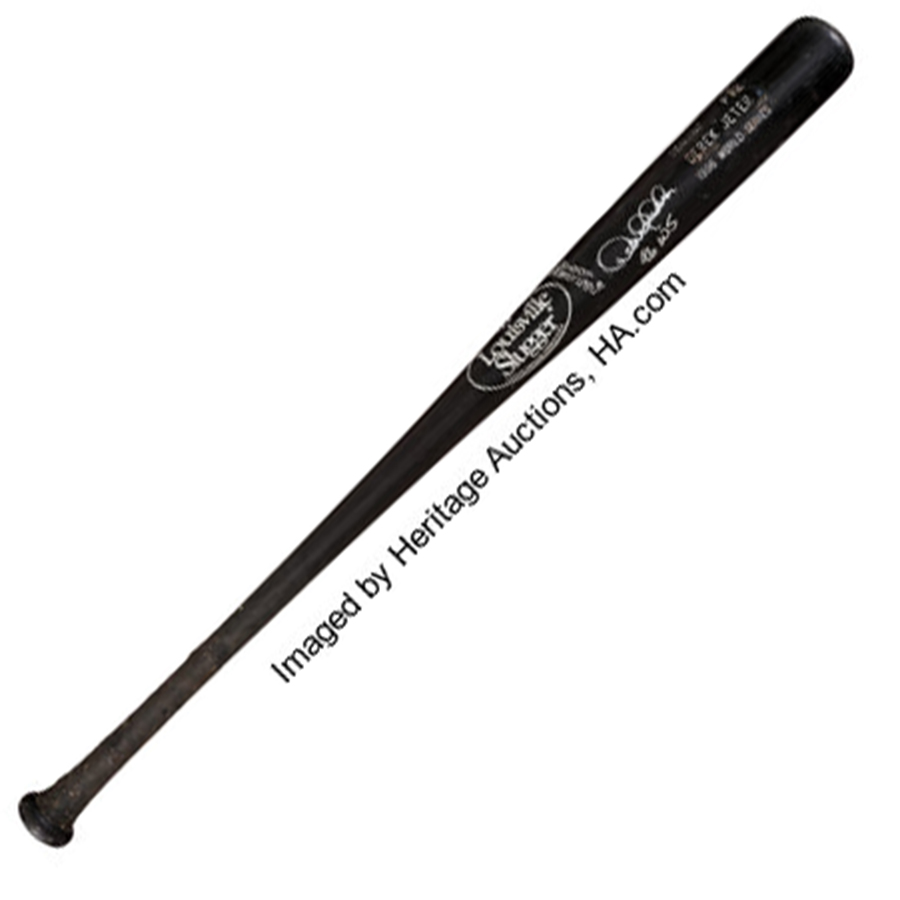
The Connection to Specific Periods or Moments in Time Matters
Frequently, the story behind each piece is what separates it from one of similar quality, type or vintage. While this principle applies to other kinds of sports collectibles, one could argue that game-used items are affected more than any other by their connection to a meaningful time or place. Much like eye appeal, assuming everything else about the artifact is equal, if the piece of equipment was used during a specific era, season or moment, its appeal can be propelled to extraordinary heights if it connects to something special or desirable.
For example, items used during periods of outstanding individual or even team achievement elevate the equipment from a historical or nostalgic perspective in the minds of many collectors. If the item is photo-matched to a specific game, the same principle applies. The performance tied to the game, both good and bad, can have an impact on value. Furthermore, when the moment itself is considered iconic, this specific connection can take a game-used item from a player who is perceived as something less than a GOAT and turn the collectible into a Grail.
A prime example of this is a trio of game-used items that first came to market in 2010. The bat, jersey and helmet used by Kirk Gibson during his unforgettable walk-off home run in Game 1 of the 1988 World Series sold for slightly more than $1 million combined at auction. The bat alone sold for $575,912, which placed it in elite company at the time. Gibson certainly had an excellent career, but prices like this are usually reserved for the legends of the game. In this instance, the importance of the moment transformed the equipment into something special.
Sports history is frequently defined by moments like this, which is why value can be impacted in such dramatic fashion.
Key takeaway: Connecting a game-used bat to a specific period, year or event can heighten its appeal.
Enlarge

Provenance Should Be Credible and Photo-Matches Definitive If Paying a Premium
While the experts can certify most bats on their own merit, the addition of provenance or a photo-match can create a higher level of demand, sometimes considerably higher. As we covered earlier, provenance is the connection to the item’s origin. Put another way, it is the explanation behind how the piece survived the test of time and ultimately entered the sports collectibles market.
Photo-matching is the process of comparing distinct features of the bat with images or video footage from a player’s career to see if an exact match can be made between the two objects. If a match is confirmed, it can pinpoint the bat to a specific moment in time or period that could be meaningful to the collector.
Leaps of faith on the part of the buyer are often required in the world of collectibles. The real question is whether the leap required is unreasonably big or relatively small to reach a logical conclusion. It is hard to avoid some measure of subjectivity in these areas, but allow your common sense and analytical aptitude to prevail. The value of provenance should be in direct correlation to its credibility, while the value of a photo-match should lie in the strength of its certainty.
Enlarge

When it comes to provenance, if the story behind its origin requires layers upon layers of explanation, it is usually a bad sign. In other words, the harder it is to connect the dots or parties involved, the weaker provenance becomes. Regarding photo-matching, the markings or central points being analyzed need to be clear and distinctive enough to result in a conclusive match.
Anything less is nothing more than a style match. A style match still offers value, but it does not rise to the ultimate matching level described in this section. There are various companies that offer photo-matching services. Each one has different degrees of brand power within the industry. Regardless of the service’s reputation, as a buyer, it is critical that you are comfortable with their findings.
Key takeaway: The value of provenance and photo-matches is unquestionable, if the pedigree and analysis leave little to no doubt, but not all ties to origin are created equal.
Whether you are drawn to vintage relics that hitters used to become legends or modern gamers that trigger your nostalgia, we hope this guide proves useful on your collecting journey.
 JOE ORLANDO is Executive Vice President of Sports at Heritage Auctions. He can be reached at JoeO@HA.com or 214.409.1799.
JOE ORLANDO is Executive Vice President of Sports at Heritage Auctions. He can be reached at JoeO@HA.com or 214.409.1799.

